3/4" Engineered hardwood brands?
CD
4 years ago
last modified: 4 years ago
Featured Answer
Sort by:Oldest
Comments (8)
User
4 years agoRelated Discussions
3/8 vs 3/4 hardwood or engineered wood
Comments (3)3/8 solid and 3/4 solid, are going to be a long term, resandable surface. The 3/4 can be refinished and sanded down to bare wood, more times then a 3/8. That is the only trade off. 3/8 helps and is much easier on transitions to other flooring. Engineered vs. solid has been hashed out many times over. If your going over a concrete foundation, or have concerns with dramatic humidity swings, engineered is the flooring you need....See More5/16 versus 3/4 inch engineered hardwood
Comments (7)A couple of things on thickness of engineered that may or may not matter. 1. Depending on what you are putting the flooring over (concrete or floor joists) and how you are installing (glue vs. floating), the thicker floor will be stiffer. This will allow for less flexing over joists, and less movement over potential hollow spots on glue down installations. 2. The thicker floor will tend (not always the case so you need to verify) to have a thicker face layer (the "good" wood). This could allow for more sandings, and is less likely to have something "tear" through it. 3. Purely my opinion (no facts to back up) but if you are floating the floor, I believe the thicker floor would transmit less sound as it wouldn't be as prone to vibration as the thinner product. Think of a drum head. If you made it really thick, I don't think you'd get the same drum sound. All that being said, if you are in a situation where these factors aren't that important, the thinner product (apples to apples) will tend to be less expensive and could allow for easier transitions. Hope this helps....See MoreEngineered Hardwood versus Hardwood
Comments (23)ok, this is an area where I actually know something! I sold and spec'ed hardwood for a custom shop before my mommy-life. The information you are getting here is correct. Engineered floors will give you 1-2 refinishings ON A PERFECT SUBFLOOR. One of the issues that sometimes arises if there are inconsistanies in the height of your subfloor. Because there is thinner wood wearlayer (before you get to the engineered wood) there is the chance that you can damage the floor irreparably when you sand it. Now I only saw this saw this happen twice, once on a loft job and once in an older home. The loft was more subtle as it was over concrete, the old house more obvious as they were DIYers and picked engineered flooring to try to negate their irregular subfloor (they neglected to tell us that that was why they chose engineered, we would have talked them out of it had we seen the floor first) Neither of their claims to the manufacturer were fully settled because both times they did not follow the guidelines for floor prep. The loft job was also a materials only job for us with their GC laying the floors but he insisted he knew what he was doing. A good engineered floor will not be cheaper than most of your nail down options because the production costs are higher. Now having said that, GOOD engineered floors certainly have their place in places where you can't put traditional hardwood due to height restrictions or concrete subfloors. My boss had a great engineered floor in his basement and it survived a flood remarkably well (it was ash, Kahrs brand out of Scandinavia and one of the beefier engineered floors and one of the pioneers) My Grandmother also had a Kahrs floor in her ground suite condo and she LOVED it and I was impressed by the milling. I'm considering it for our basement because it's warmer and less echo-y than laminate There has been a lot of 2nd rate engineered flooring coming out of China and being labeled for all sorts of different companies. You should be able to tell an engineered sample because the layers are sandwiched together and the tongue will be a different wood than the top (showing) layer. Distressed finishes are usually more expensive because of the extra step in manufacturing to make it distressed. That is different than just getting a lower grade of hardwood like a rustic or tavern grade (in solid hardwood). Those grades have more character but they often don't carry a warranty and generally have a higher waste percentage. Another thing to think about---if you ever have to replace part of the floor, you will always be able to replicate 3/4" thick hardwood but engineered floors are more like tile, they change and get discontinued over the years. You could go pre-finished, save the hassle of site finishing but with the thicker wear-layer a 3/4" nail down floor offers. Only you will know if you can handle beveling or not. The changes in milling the last 10 years are huge. The bevel in your better milled wood is tiny. I like Canadian mills, Model or Mirage for pre-finished. Remember that if you ever re-finish, the bevel will disappear and you will, essentially have a site finished floor. One benefit that many people don't know about? With a prefinished tongue and grooved floor you can have a good installer cut out a single board (or more) from your floor if it gets damaged which is why we did a fair bit of pre-finished in new homes since inevitably we would get call-backs at move in to repair trade damage (@#$%^ plumbers and their big wrenches!). Prefinished hardwood deals the best with shinkage and expansion issues because the finish is on individual boards. Site finished floors are more labor intensive but the materials are cheaper (apples to apples). They are what many people consider the gold standard however there are more steps and you don't always know how it's going to look until it's done. There is more chance of finish contamination and trade damage during the rest of the building process. We refinished 100 year old floors. I loved the idea that there wasn't 4 generations of carpet and crap in the landfill. Definitely a forever floor and it can usually be re-sanded for all but the very worst water damage (think entire house under water for a few days) If you are going with a wide plank, keep in mind your species and humidity level (and your ability to keep humidity stable). The wider the plank (with 3/4" thick flooring), the more obvious shrinking and expanding will be. If you take a 2" wide board and it shrinks 2%, it isn't very noticeable. If you take a 6" wide board and it shrinks 2% the gaping will be more noticeable and in the case of a site finished floor *could* pull your finish apart. You'll need to find a flooring contractor in your area with lots of experience. Most of the best hardwood shops ONLY do hardwood. Beware of carpet shops and many of the big box stores in many instances. Make sure they are accredited with the NWFA (national wood flooring association) http://www.nwfa.org/member/ good luck!...See More3/4" Thickness Engineered Hardwood
Comments (3)I'd steer from any transition. It's a carpet store shortcut in my opinion. Better done jobs always eliminate ugly transitions unless it's a floating floor. Also to consider is age of those in the household. I deal with a mostly over 50 crowd that think ahead.... "This is our dream home and our last home. I don't want to deal with trip hazards or inaccessibility should I have to use a walker or a wheel chair when I'm older." 3/4" engineered. Over 100 colors. USA Made...See MoreCD
4 years agoCynthia
4 years agomillworkman
4 years agoUptown Floors
4 years agoCaliber Construction
2 years ago
Related Stories
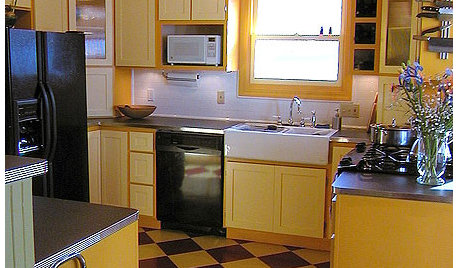
KITCHEN DESIGNKitchen Remodel Costs: 3 Budgets, 3 Kitchens
What you can expect from a kitchen remodel with a budget from $20,000 to $100,000
Full Story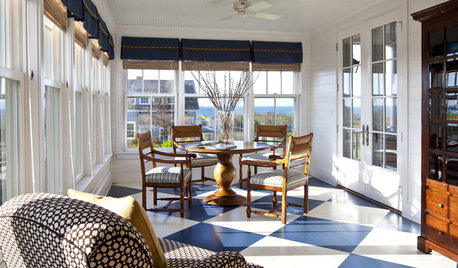
FLOORSHow to Paint Your Hardwood Floors
Know how to apply nail polish? Then you can give your wooden floors a brand-new look
Full Story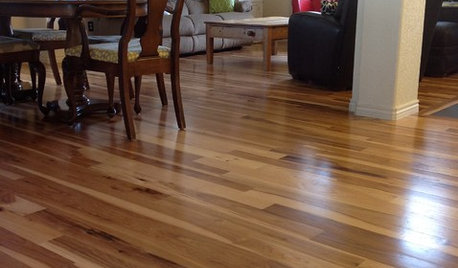
MATERIALSWhat to Ask Before Choosing a Hardwood Floor
We give you the details on cost, installation, wood varieties and more to help you pick the right hardwood flooring
Full Story
MOST POPULARHow Bluetooth 4.0 Will Change Remote Control
Manage lights, TV, refrigerators and more through your phone or tablet when the latest wireless technology rolls into all your home devices
Full Story
KITCHEN COUNTERTOPSThe Latest Colors and Styles in Engineered Surfaces
Dark and light hues, sophisticated veining and textured finishes stood out at the 2020 Kitchen & Bath Industry Show
Full Story
HOUSEKEEPINGHow to Clean Hardwood Floors
Gleaming wood floors are a thing of beauty. Find out how to keep them that way
Full Story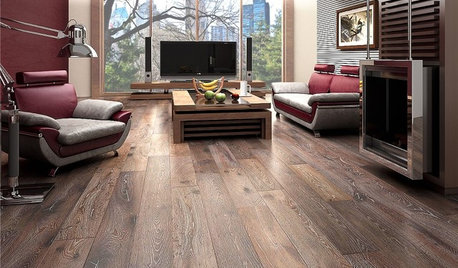
REMODELING GUIDESWhen to Use Engineered Wood Floors
See why an engineered wood floor could be your best choice (and no one will know but you)
Full Story
REMODELING GUIDESWhat to Know About Engineered Wood Floors
Engineered wood flooring offers classic looks and durability. It can work with a range of subfloors, including concrete
Full Story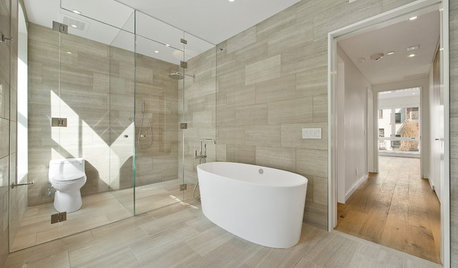
REMODELING GUIDESTransition Time: How to Connect Tile and Hardwood Floors
Plan ahead to prevent unsightly or unsafe transitions between floor surfaces. Here's what you need to know
Full Story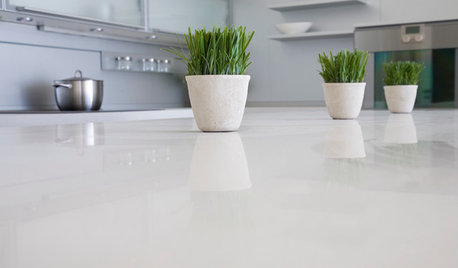
KITCHEN DESIGNKitchen Counters: Stunning, Easy-Care Engineered Quartz
There's a lot to like about this durable blend of quartz and resin for kitchen countertops, and the downsides are minimal
Full Story

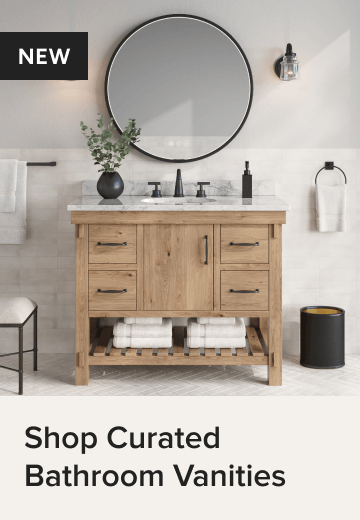

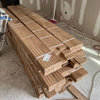
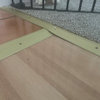


Oak & Broad